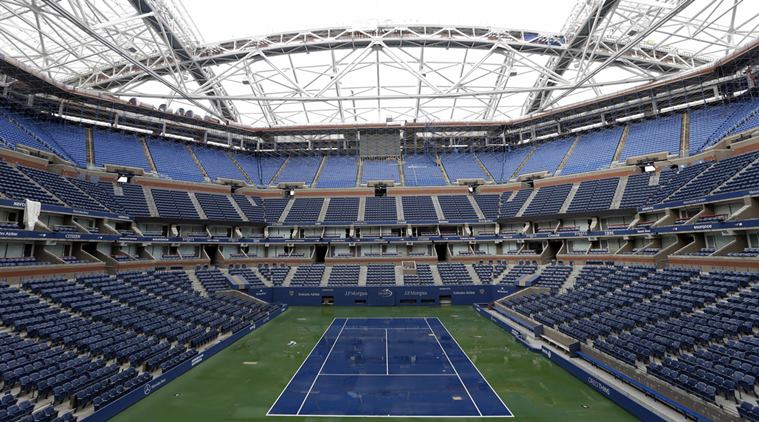Despite roof over Arthur Ashe, US Open wants ‘outdoor’ event
 The roof’s two retractable panels take about seven minutes to slide shut. (Source: AP)
The roof’s two retractable panels take about seven minutes to slide shut. (Source: AP)
For once, U.S. Open organizers were hoping for more rain.
With the retractable roof atop Arthur Ashe Stadium set to be ready in 2016, they planned to use last year’s tournament as a rehearsal, analyzing the forecasts then discussing whether they would or wouldn’t cover up at a particular moment.
Then there was only one day of significant rain.
“I wish we’d have had worse weather so we’d be better ready for this year,” Gordon Smith, the U.S. Tennis Association’s executive director, said with a chuckle.
USTA officials gave an update on construction Monday at Flushing Meadows, where the second half of the Ashe roof and the new Grandstand will be completed in time for the first matches Aug. 29.
Wimbledon and the Australian Open already have retractable roofs over their main stadiums, with plans in place for the French Open to add one.
Smith said organizers in London and Melbourne have passed along advice on how to decide when to close up.
The U.S. Open expects to use the roof only for rain, unlike the Aussie Open, which also does so in cases of extreme heat.
A meteorological crew on site should be able to accurately predict rain within about 20-30 minutes, Smith said.
What he doesn’t want to see is an overly cautious approach where the roof closes frequently when rain isn’t likely.
“We want this to be an outdoor tournament; we want to keep the roof open if at all possible,” he said.
“We will run a little risk of getting some rain on the court in order to keep this an outdoor event, to keep the competition fair for everybody.”
If the court gets wet before the roof closes, the delay will be about 30 minutes, said Danny Zausner, the chief operating officer of the USTA Billie Jean King National Tennis Center.
The stoppage will be more like 15 minutes if it closes before the rain starts.
The roof’s two retractable panels take about seven minutes to slide shut.
The fabric stretched across the roof provides the added benefit of shade for many spectators at Ashe.
More shade also comes from other parts of the project from canopies above many seats of the new Grandstand, which is on the opposite corner of the complex from the old one and increases capacity from 6,000 to 8,000, and from additional trees dotting the walkways of the tennis center.
The old Grandstand, the Open’s third-largest venue, will sit empty during this year’s tournament, then will be demolished afterward.
Louis Armstrong Stadium, the second-biggest facility, will also be torn down at that time.
The new Armstrong won’t be ready until the 2018 tournament, with capacity increasing from 10,000 to 14,000. For the 2017 Open, a temporary stadium that can seat 8,500 will be erected in the parking lot adjacent to the old Grandstand.
The new Armstrong will also have a retractable roof.
Unlike Ashe, it will not be climate-controlled: Ventilation panels will allow air to flow through.
The demolition of the old Grandstand will open up more space for spectators, with construction on the south side of the complex also creating more room.
Ten outer courts were torn up and repositioned, widening a walkway from 10 to 40 feet.
A new food court will also be added in New York.





